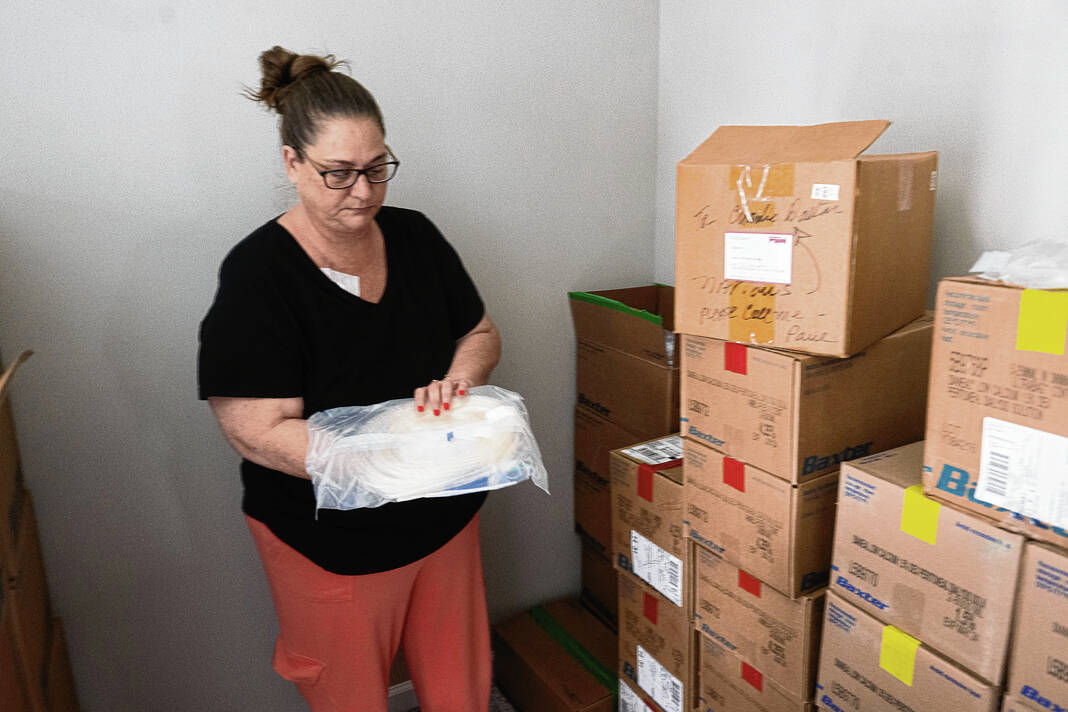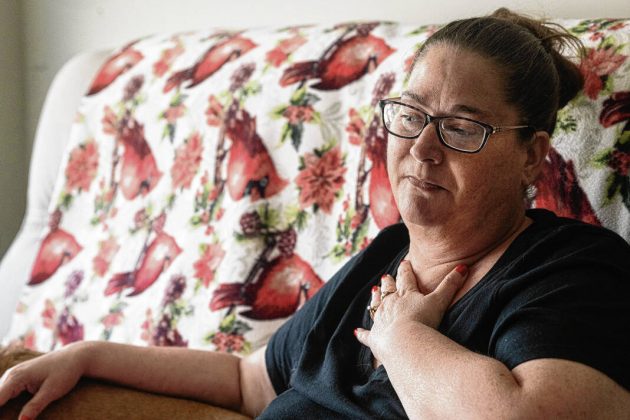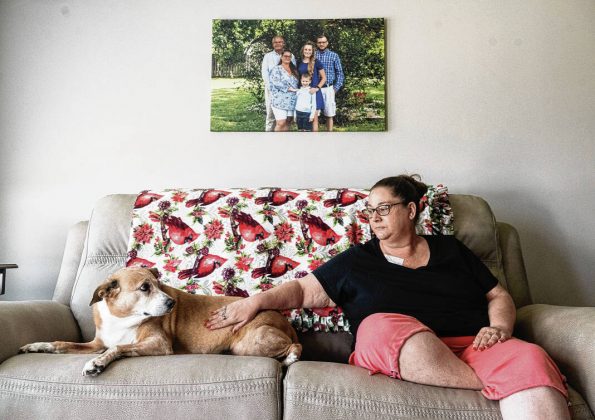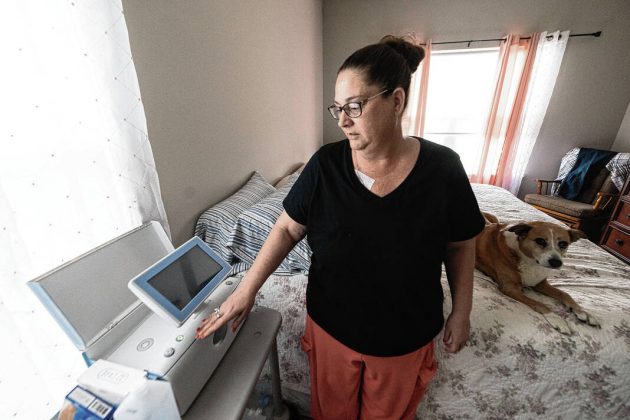GREENFIELD — As the needle was inserted into her arm Tuesday afternoon, Leia Melvin leaned back in the leather recliner and tried to relax.
As usual, it was going to be a long three hours or so.
The Greenfield woman stops by the Fresenius Kidney Care center in Greenfield three times a week for dialysis, a necessary step in treating the kidney complications that have plagued her for over 20 years.
Melvin, 52, got her first kidney stone when she was 30, and has since had 30 to 40 surgeries to remove stones over the years.
The chronic condition has caused kidney failure, which is why she dutifully shows up for dialysis treatments three times a week and has spent many nights hooked to a home dialysis machine, both of which are designed to filter waste and excess fluid from her blood, as normal functioning kidneys would do.
This week marks the one-year anniversary of the day Melvin joined the kidney transplant list at St. Vincent Hospital on June 1, 2022. She’s in the process of transferring to a larger program through IU Health.
Like all people on the transplant list, all she can do is wait.
According to United Network for Organ Sharing (UNOS), a private nonprofit that works under contract with the federal government, there are more than 106,000 people on the national transplant waiting list, with 92,000 (87%) waiting for a kidney.
There are an average of 117 organ transplants every day, according to UNOS.org.
When Melvin registered, she was told there were 500 people on the list ahead of her at the time, and that most people wait between five and seven years to be matched with a donor.
For some, however, a donor never comes.
That’s why Melvin is speaking up about the importance of organ donations, and the fact that living donors can make the selfless decision to save a life.
“I have had an amazing life,” said Melvin, who works as a business operations manager for a plumbing and HVAC company just outside Greenfield off Mt. Comfort Road.
“I can honestly say no matter what happens — if I get a kidney or if this is my way to go — I’ve had an amazing, eventful life. I have no regrets whatsoever,” she said.
What she does regret is that more people don’t know about the opportunity to save a life as a living organ donor.
“I want people to understand that they can do a living transplant and save another person’s life. If we could just get the word out there and help people to understand, we could make a difference in people’s lives,” said Melvin, whose heart goes out to the young people she sees undergoing dialysis each week.
“It breaks my heart when I go in and see all these people who need a transplant, knowing there’s all these people in the community that could potentially give them one,” she said.
“I’ve had 52 years to live my life, but I keep thinking about those 20-year-old kids, those 30-year-old kids. They still have 40 or 50 years to go, so let’s make it so that they can do that and they’re not confined and defined by having this condition,” said Melvin.
“They didn’t want it. They didn’t choose it, it happened to them. There’s nothing anybody did to have this happen to us, but some attention needs to be brought to how people can help,” she said, getting emotional as she spoke.
Courtney Hudson, who manages the Greenfield clinic where Melvin undergoes dialsys, said many of the 60 patients the clinic serves are on the wait list for a kidney transplant.
“That’s why living donors are so important,” Hudson said on a recent afternoon as Melvin underwent treatment.
Melvin said those undergoing dialysis or who are on the waitlist for a kidney often look like any other person walking down the street.
“If we passed each other on the street you would never ever think, ‘She’s dying. She has to be hooked up to a machine every single night in order to live,’ because I look perfectly normal. I don’t look sick. I don’t act sick, and a lot of dialysis patients don’t,” she said.
Yet the reality is they need an organ donor’s help to survive.
“It’s either find a donor or do (dialysis) forever,” said Hudson.
In the meantime, Melvin considers herself lucky to have such an amazing support system, which includes her husband of 26 years, two sisters and a niece who will soon graduate from nursing school, as well as “an amazing circle of friends who have taken me to doctor’s appointments.”
Extreme fatigue is a common side effect of renal failure, she said, and her support system often helps out by helping clean her house or walk her dog when she feels too wiped out to do it herself. Simple tasks like taking a shower can be physically exhausting, she said, in addition to how emotionally draining the disease can be.
As she continues to wait for that one phone call that can change her life, with news of a suitable organ donor, Melvin continues to spread the word encouraging people to look into becoming a living donor.
“All of my labs are still within normal range, so I’m extremely lucky. I can probably go for three to five years before I get really sick, unless something major happens,” she said, “but there are so many people who need kidney and liver transplants that can get help from living donors. There’s people out there in worse shape than I am who need this, and for whatever reason they can’t get it,” she said.
“We need to spread the word that our community can save lives.”
According to UNOS, more than 6,500 people became living organ donors last year.
Suitable donors can be anyone 18 years old or older in good overall physical and mental health.
More information on what becoming a living donor entails can be found at UNOS.org.








